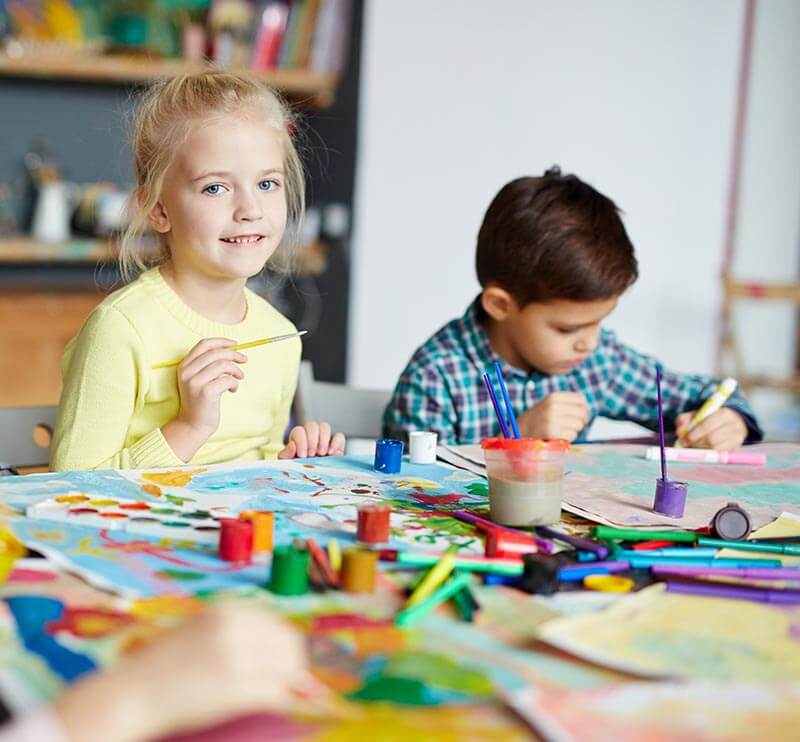What to Bring
Clothing
Clothing your child will be active both indoors and out and his comfort is an important concern to us. It is important for your child to be dressed in comfortable, washable, clothes that will adapt for food spills, paint, sand and water play. We ask that you please label jackets, sweaters, hats, bathing suits, towels and other clothing that might be removed. All children must wear shoes at all times. If your child is an infant or in the process of being toilet trained, we urge you to provide us with sufficient changes of clothing. Older children also need a change of clothes to accommodate physical activity and outdoor play.
Supplies
| Diapers, Wipes & Diaper Cream |
| Extra Clothes |
| Formula/Baby food |
| Diapers, Wipes & Diaper Cream |
| Extra Clothes |
| Crib Sheet & Small Blanket |
| Diapers & Wipes |
| Extra Clothes |
| Crib Sheet & Small Blanket |
| Potty training supplies |
| Crib Sheet & Small Blanket |
| Pack of Wipes |
| Extra Clothes |
| Crib Sheet & Small Blanket |
| Pack of Wipes |
| Extra Clothes |
Toys From Home
We discourage children from bringing toys and treasures from home because of the potential for loss and breakage. Any item for our occasional Show and Tell or other activity should be labeled with the child's name and taken home at the end of the day.

Nap Time
We provide a rest mat for each child, however we ask that you provide a small pillow, a small blanket and a crib sheet for use when your child naps. Parents will be responsible for cleaning their child's naptime linen on a weekly basis.
Potty Training
Learning to use the toilet is a big event in a young child's life. Most children are eager to learn how to use the "potty" and are proud of their achievement.
Toilet training is easiest when children are physically and emotionally ready, which happens between age 2 and 3 years. Girls usually gain physical control over their bowel and bladder muscles before boys do. On the average, most girls are potty-trained by age 2-1/2 and most boys about age 3. Don't be alarmed if a child doesn't follow this pattern closely; individual children mature physically at different rates.
The secret to success is patience and timing. Emotional readiness also is important. Many bright, normal, healthy, 3-year-olds may not be interested in learning to use the toilet. Learning is a full-time job for most toddlers, and learning to use the toilet may not be as important as learning to climb, jump, run, and talk. A toddler who resists toilet training now may be ready in 3 to 6 months - often learning almost overnight.
Items you will need to bring to the Center in order to start your child training:
- Cotton training pants. (You can buy cotton-training pants that have a plastic lining.)
- Plastic outer pants. (If the training pants do not have a built in liner.)
- Several changes of cloths, including socks and maybe an extra pair of shoes.
- Easy access clothing for your child. No belts, zippers or buttons if possible.
- Pull on elastic waist outer pants are easiest. All in ones and garments that fasten over the shoulders are not recommended.
The most important thing to remember is to be consistent. This training should be the same here as it is at home. Placing the child in a diaper at night for a while is acceptable, as bladder control takes a little longer to achieve at night.